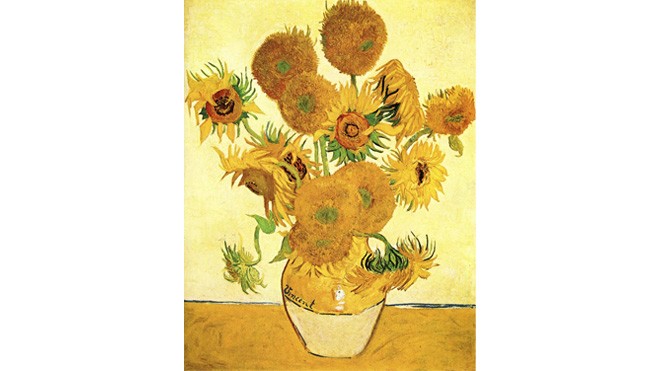
Across galleries and museums, visitors are not keen on ‘seeing’ the great works of art but using them as a backdrop of their own photographs

Growing up as an art student in Pakistan, I was taught and believed that works from art history were created on profound concepts or for some sacred purpose. Leafing through art books, art students admired the aesthetic qualities of paintings, sculptures, drawings and prints from past which are now part of museum collections around the globe.
However, when I visited some museums and public galleries recently, I realised how wrong I was. In fact, these sculptures and paintings from the past, these remarkable examples of human creativity, served only one simple purpose -- to provide a backdrop for photographs.
Whether it’s National Gallery in London, the British Museum or any such place in the world, hordes of tourists stand in long queues, waiting to get into these ‘grandiose temples’ of art and culture. As they wait, you hear them conversing in languages like Chinese, Spanish, Italian, Russian, Korean, Turkish, Arabic, Hebrew, Tamil, German, Dutch, Icelandic and Hindi or Urdu.
Once they reach the halls, there’s a common tool in their hands: camera, in the form of their cellular phone. They are busy taking pictures in front of great works of art. So, a portrait by Leonardo da Vinci, or a sculpture of Michelangelo, a painting of Peter Paul Rubens, The Sunflowers by Vincent van Gogh, ‘Rosetta Stone’ from Egypt, and images of gods carved in marble, all serve to be a nice background for a group of individuals at the museum. All of them follow the same code of etiquette: smile while standing or sitting next to a huge canvas -- perhaps a group of men slaughtering each other -- and either take a selfie or request a fellow visitor to perform this task for you.
Everyone is aiming for the same goal; happy to be of some help in this pursuit, especially to those who are single or those who wish to be pictured as a couple or an entire group. Tourists irrespective of where they come from take your phone and -- since cellular phones have no such thing as cultural specification -- are able to operate your gadget for you.
All this while, they hardly look at the work on display. Either they don’t have the time or they are not interested or they simply can’t because it is always behind some eager person facing a camera. Apart from the logistic of positioning themselves in front of an art work, majority of people who line up before the opening hours of a museum are not keen on ‘seeing’ the work. It is their camera which must perform that duty for them. When they are back in the comfortable space of their living rooms -- in faraway Tokyo, Cairo, Karachi, Kolkata or Barcelona -- they would remember the journey and relive the experience.
What would they ‘relive’ though? In order to enjoy an experience a second time, one must have the pleasure of an initial experience. This is missing in their first visit, as they did not ‘see’ what was on display. Anyone who shows a little bit of interest in looking intently at the art pieces in the gallery and museum soon finds himself turning into a public nuisance. He appears to be obstructing the backdrop, delaying the chain of pictures and becoming an unwanted addition into the perfect setting.
He withdraws, though not without wondering the reason behind this fad -- of getting photographed with art works. Earlier, people went to art galleries and museums to find out about other cultures and eras -- by scrutinising objects, reading the label details and ‘enjoying’ these pieces produced by other humans from centuries and decades past. Now, with the advent of camera phones and their accessibility, we live not for the experience of reality but for the sake of its documentation in digital format.
In that sense, the Madame Tussauds Museum in London encapsulates the spirit of our age. Though now it exists in some other cities of America, Europe, Australia and Asia, when it first opened in London in 1835, nobody could have imagined its link with another invention from the same years (1839) -- photography. Today, you cannot think of the establishment at the Baker Street, London without the visitors and their mobile phone cameras. They throng room after room, in search of celebrities and get themselves photographed with Angelina Jolie, Brad Pitt, Einstein, Gandhi, Picasso, Pele, Obama, Trump, Modi, Aishwarya Rai and Shahrukh Khan. There are important personalities from every walk of life, some more sought-after than others, and a few neglected. But all of them are there so that a common visitor to the Museum can have the (picture) proof of being in the company of these larger-than-life individuals.
Whether one is getting oneself photographed in front of a Roman Emperor at an Italian city centre or next to Mona Lisa in a Paris gallery or perched on the same sofa as Julia Roberts inside a wax museum, everybody is seeking an eternal life it seems.
The photograph -- like the death mask from Roman period -- would outlive a person. Yet, the most important aspect of this phenomenon is that one is not waiting for others to recognise one’s ‘glory’; one is recording, preserving and saving for the generations to come -- through selfies. A situation that Hanif Kureishi describes in these words: "Narcissism is our religion. The selfie stick is our cross, and we must carry it everywhere".